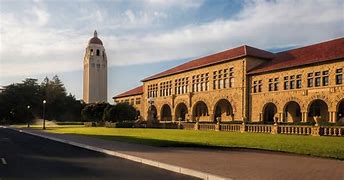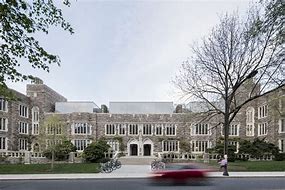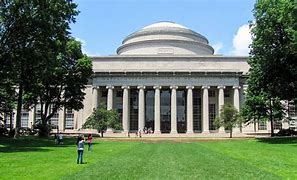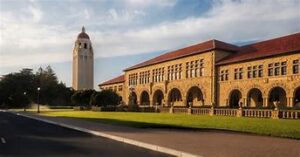Nestled among Northern California’s rolling hills in Palo Alto, Stanford University stands as a beacon of innovation, entrepreneurship, and technological advancement. Since its founding in 1885 by Leland and Jane Stanford, Stanford University: The Cornerstone of Silicon Valley’s Innovation Ecosyste institution has transcended the traditional role of academia, becoming the driving force behind the emergence and growth of Silicon Valley, the world’s leading hub for technology.
Pioneering Beginnings: A Vision for the Future
From the outset, Stanford’s commitment to combining practical education with academic rigor set it apart. This foundation catalyzed the university’s transformation into a magnet for exceptional minds and a cradle for groundbreaking ideas. Despite early challenges, such as the 1906 San Francisco earthquake, Stanford flourished, steadily building its reputation as a premier institution.
The Birth of Silicon Valley: Terman’s Legacy
Stanford’s deep ties to Silicon Valley can be traced back to Frederick Terman, an engineering visionary and faculty member whose “steeple of excellence” strategy fostered collaboration between academia and industry. His initiatives, including the creation of the Stanford Research Park in 1951, established a synergistic ecosystem where groundbreaking companies like Hewlett-Packard and Varian Associates could thrive.
From Semiconductors to the Internet: Shaping the Tech Landscape
Stanford’s role in the semiconductor revolution cemented its position as a hub of innovation, birthing companies like Fairchild Semiconductor and contributing to Silicon Valley’s moniker. In later decades, Stanford remained at the forefront of technological breakthroughs, nurturing the development of the internet and incubating global giants such as Google, which emerged from the research of PhD students Larry Page and Sergey Brin.
A Legacy of Impact and Entrepreneurship
Today, Stanford University continues to influence the global tech industry, producing leaders, innovators, and groundbreaking research. It remains the cornerstone of Silicon Valley’s vibrant ecosystem, driving advancements that shape the modern world and beyond.
The Stanford Engineering School: A Crucible of Innovation
Stanford’s School of Engineering stands as a powerhouse of global influence, consistently ranked among the top engineering programs worldwide. Its alumni include numerous trailblazing entrepreneurs and innovators who have profoundly impacted technology and business.
Central to this ecosystem is the Stanford Technology Ventures Program (STVP), launched in 1995. As the School of Engineering’s hub for entrepreneurship, STVP offers a wide range of courses, extracurricular activities, and research opportunities centered on technology innovation. This program nurtures a mindset of creativity and enterprise, inspiring students to turn ideas into impactful ventures.
The d.school: Revolutionizing Innovation Through Design Thinking
Founded in 2005, the Hasso Plattner Institute of Design, widely known as the d.school, has been instrumental in redefining problem-solving within Silicon Valley. By uniting students and faculty from diverse disciplines, the d.school applies design thinking methodologies to address complex challenges.
The d.school’s emphasis on human-centered design and rapid prototyping has become a cornerstone of Silicon Valley’s approach to product development and innovation, influencing how companies build user-focused technologies.
Incubators and Accelerators: Cultivating Startups
Stanford actively supports the growth of startups through programs like StartX, a non-profit accelerator launched in 2009. This initiative provides resources, mentorship, and funding opportunities for Stanford-affiliated entrepreneurs. Through such platforms, countless startups have emerged, strengthening Stanford’s reputation as an incubator for world-changing ideas Stanford University: The Cornerstone of Silicon Valley’s Innovation Ecosyste cementing its role as Silicon Valley’s innovation epicenter.
Stanford’s Research Contributions: Driving Technological Frontiers
Computer Science and Artificial Intelligence: Leading the Digital Age
Stanford has been a pioneer in computer science and artificial intelligence since the establishment of the Stanford Artificial Intelligence Laboratory (SAIL) in 1962. SAIL has led advancements in AI, machine learning, and related fields, influencing global technologies and shaping Silicon Valley’s evolution.
Beyond AI, Stanford’s contributions to programming languages, computer graphics, and human-computer interaction have set industry benchmarks, reinforcing the university’s critical role in the digital revolution.
Biotechnology and Medical Research: Bridging Health and Technology
Stanford’s influence extends into biotechnology and medicine, spearheaded by the Stanford University School of Medicine. Innovations originating from Stanford have fueled the growth of the biotech sector, with companies like Genentech, co-founded by Stanford’s Herbert Boyer, revolutionizing genetic engineering and biopharmaceuticals.
Environmental Science and Sustainable Technologies: Innovating for the Planet
The Stanford Woods Institute for the Environment exemplifies the university’s commitment to addressing global environmental challenges. By fostering interdisciplinary collaboration, the institute advances solutions for sustainability and climate change.
Stanford’s leadership has also fueled Silicon Valley’s cleantech movement, with breakthroughs in renewable energy and sustainable technologies originating from the university’s research. These efforts align Silicon Valley’s growth with principles of environmental responsibility.
Stanford’s Interdisciplinary Approach: Breaking Academic Boundaries
Stanford’s success lies in its embrace of interdisciplinary education. Programs like Stanford Bioengineering, blending engineering and life sciences, illustrate the university’s commitment to bridging academic silos. This approach equips graduates to solve multifaceted, real-world challenges, ensuring Stanford remains a leader in education and innovation.
Stanford’s entrepreneurial and research ecosystem continues to drive global progress, from Silicon Valley’s tech dominance to breakthroughs in health and sustainability. Its legacy of interdisciplinary excellence and innovation solidifies its role as a world-class institution shaping the future.
Online Education: Revolutionizing Access to World-Class Learning
Stanford University has emerged as a trailblazer in online education, launching its first Massive Open Online Courses (MOOCs) in 2011. Through its Stanford Online platform, the university offers an extensive array of courses and programs, empowering learners worldwide to access the knowledge and expertise of its faculty.
This digital transformation has not only extended Stanford’s reach but also redefined the global landscape of higher education. By leveraging cutting-edge platforms, Stanford democratizes access to quality education, reaffirming its position as a leader in innovative teaching methodologies.
Talent Pipeline: From Lecture Halls to Leadership Roles
Stanford’s close relationship with Silicon Valley creates a continuous cycle of growth and innovation. The valley’s tech giants actively recruit from Stanford, offering high-impact roles to graduates. Many alumni later establish their own startups or return as mentors and investors, fueling the next wave of technological breakthroughs.
Research Partnerships: Catalysts for Innovation
Collaboration between Stanford and Silicon Valley firms drives cutting-edge research. Major companies like Google, Meta, and Microsoft provide significant funding for research initiatives, ensuring Stanford remains at the forefront of technological advancements while supplying the industry with transformative ideas.
Alumni Networks: Bridging Academia and Industry
Stanford’s robust alumni network is an invisible yet powerful force in Silicon Valley. Prominent alumni serve as mentors, investors, and advisors, creating a self-sustaining cycle of innovation and entrepreneurship that connects the university’s academic rigor with the industry’s dynamic growth.
Ethical Considerations: Addressing Technological Impacts
As Silicon Valley faces scrutiny over issues like data privacy and the societal effects of innovation, Stanford is proactively addressing these concerns. The university has expanded its focus on ethics in technology, offering courses and initiatives to explore the social responsibilities of innovation.
Diversity and Inclusion: Building a Representative Tech Ecosystem
Stanford, like the broader tech industry, faces challenges in achieving diversity. To address this, the university has launched programs aimed at increasing representation of women and underrepresented minorities in STEM fields, promoting inclusivity in its community and the industry.
Balancing Academic Freedom with Market Demands
The close ties between Stanford and industry have sparked debates about the commercialization of academic research. Critics warn that a focus on marketable outcomes might overshadow basic research. Stanford navigates this tension by maintaining a balance between academic integrity and its role as an economic growth driver.
Pioneering Emerging Technologies
Stanford is positioning itself at the forefront of fields like artificial intelligence, quantum computing, and biotechnology. Initiatives like the Stanford Institute for Human-Centered Artificial Intelligence (HAI) reflect the university’s commitment to addressing future challenges and opportunities.
Expanding Global Influence
As global competition intensifies, Stanford is extending its reach through initiatives like Stanford Global Studies and international research collaborations, ensuring that Silicon Valley remains the global leader in innovation.
Leveraging Technology for Societal Impact
Stanford is increasingly focused on solving societal challenges, from climate change to healthcare innovation. Its interdisciplinary approach Stanford University: The Cornerstone of Silicon Valley’s Innovation Ecosyste strong industry ties position it as a key player in harnessing technology for the greater good.
Legacy of Leadership: Visionaries Shaping the Future
Stanford’s leaders have consistently fostered a culture of innovation and interdisciplinary collaboration. Under the guidance of figures like Wallace Sterling, who elevated the university in the mid-20th century, and Marc Tessier-Lavigne, who leads today, Stanford continues to adapt to technological and educational shifts while nurturing its ties with Silicon Valley.
Conclusion:
The symbiotic relationship between Stanford University and Silicon Valley has shaped industries, economies, and societies worldwide. Stanford’s enduring commitment to education, research, and collaboration ensures that this partnership will remain pivotal in addressing the challenges and opportunities of the 21st century.
As the university continues to educate innovators, foster groundbreaking research, and collaborate with global partners, Stanford University: The Cornerstone of Silicon Valley’s Innovation Ecosyste cements its legacy as a cornerstone of Silicon Valley’s success. The story of Stanford and Silicon Valley is not just one of history but of a shared future, poised to lead the next wave of transformative innovation.















